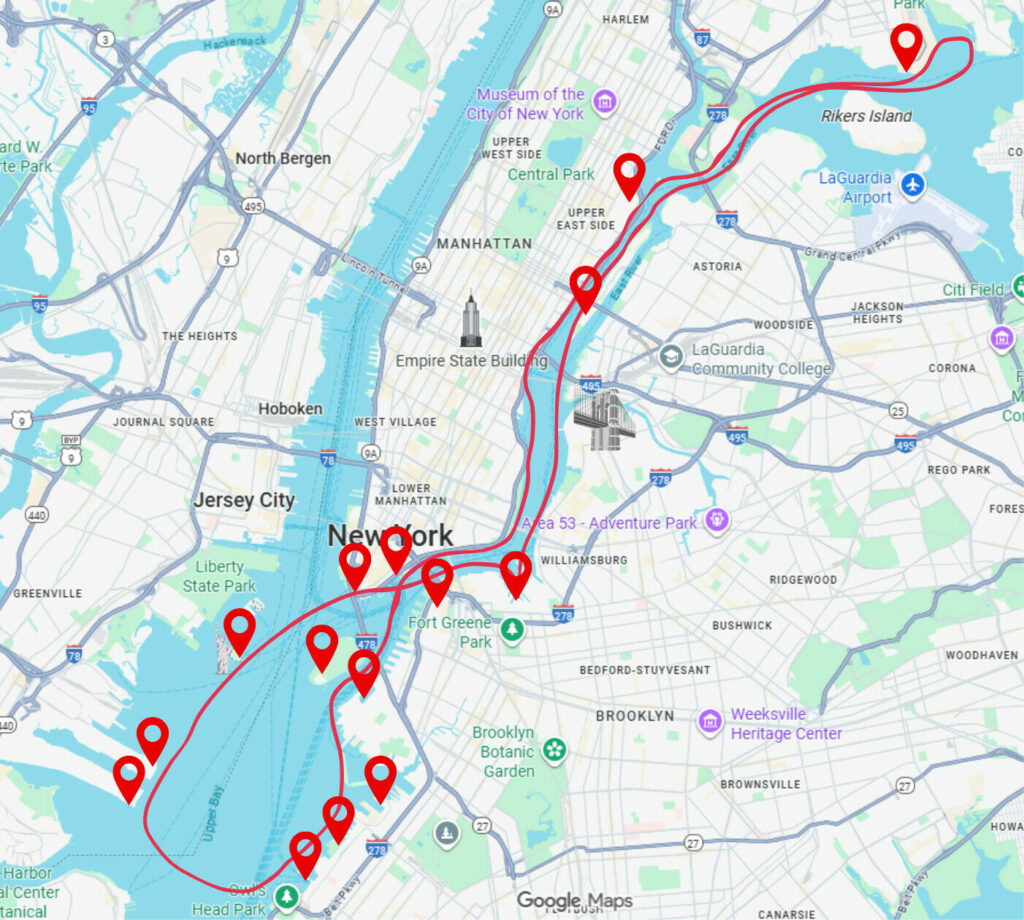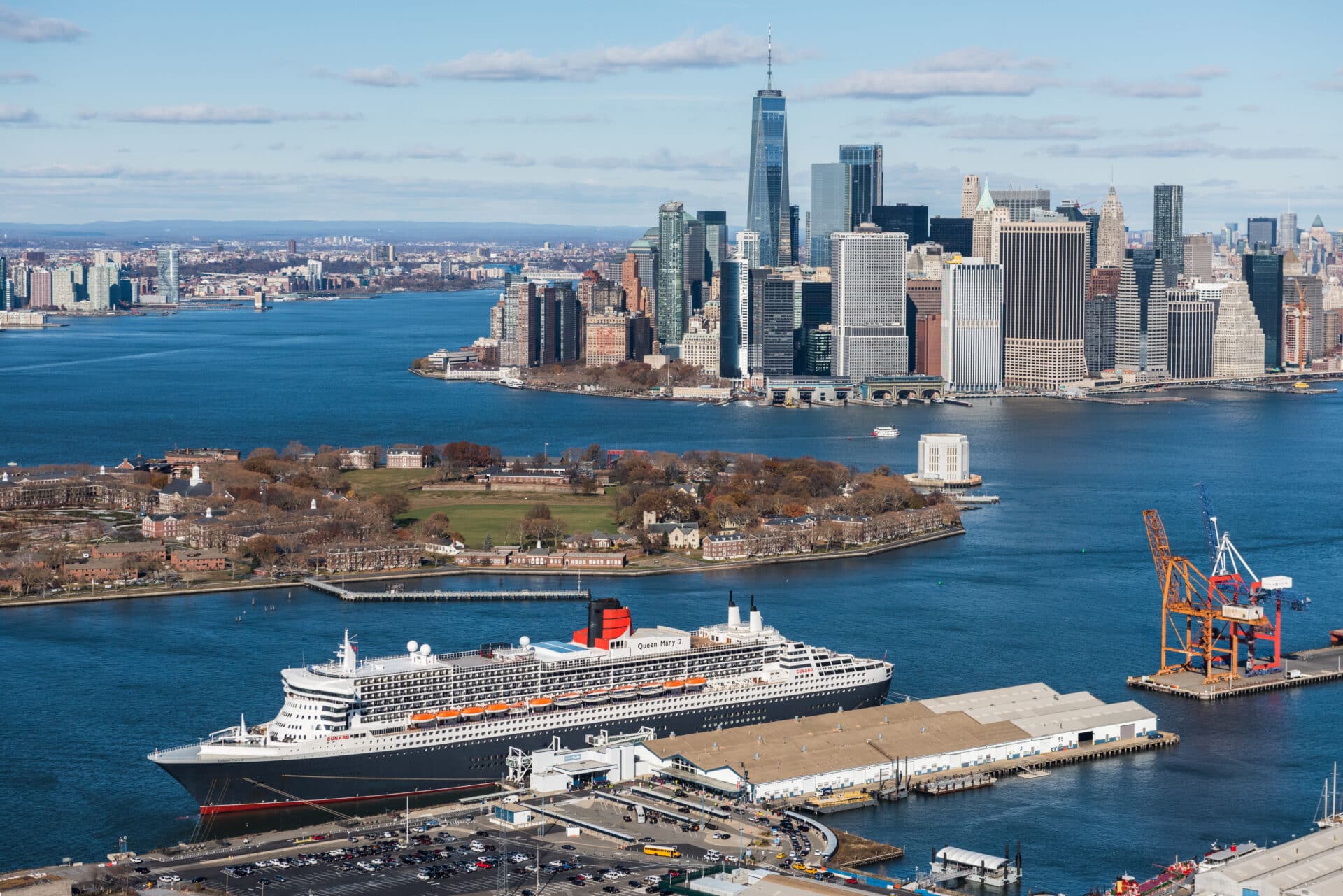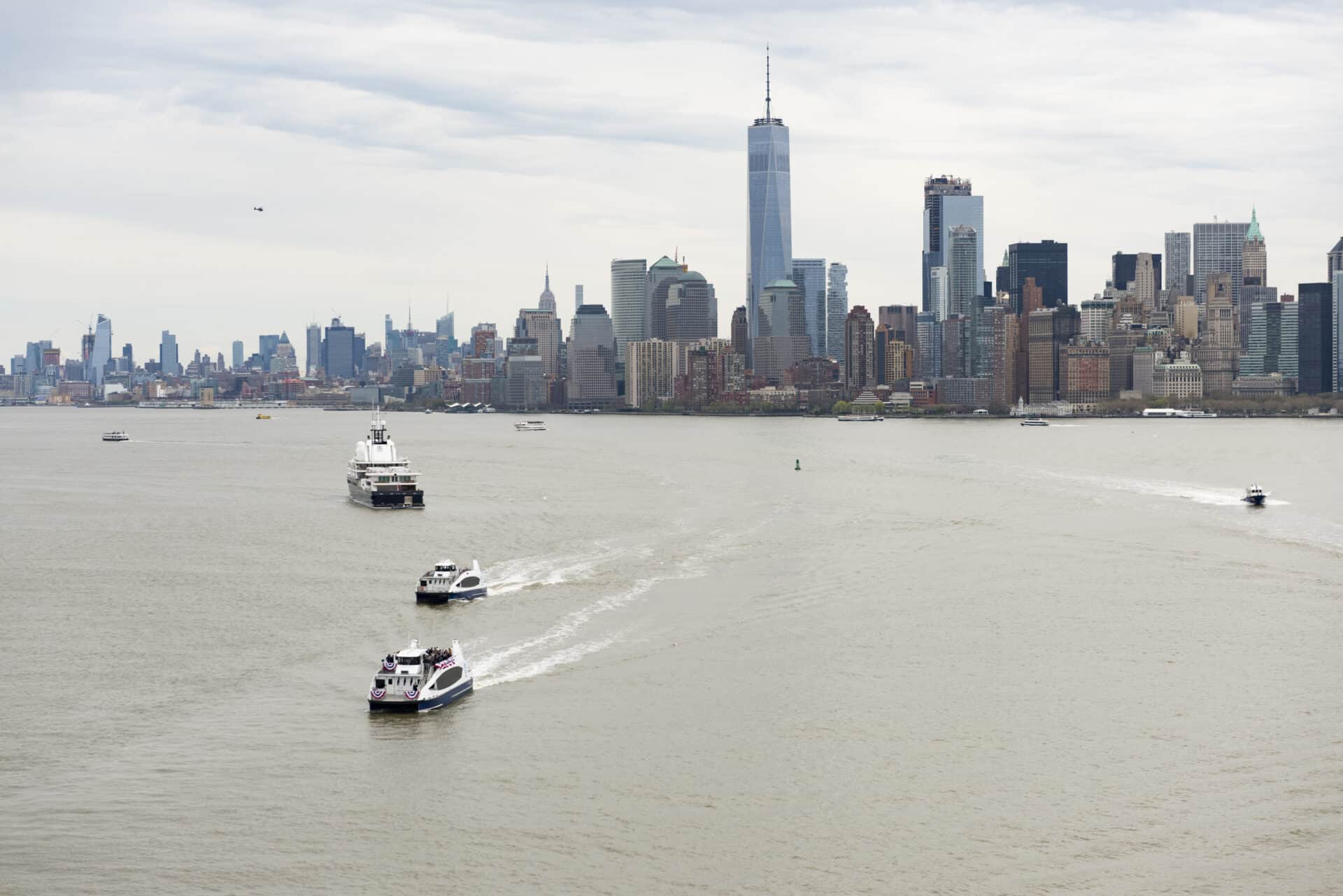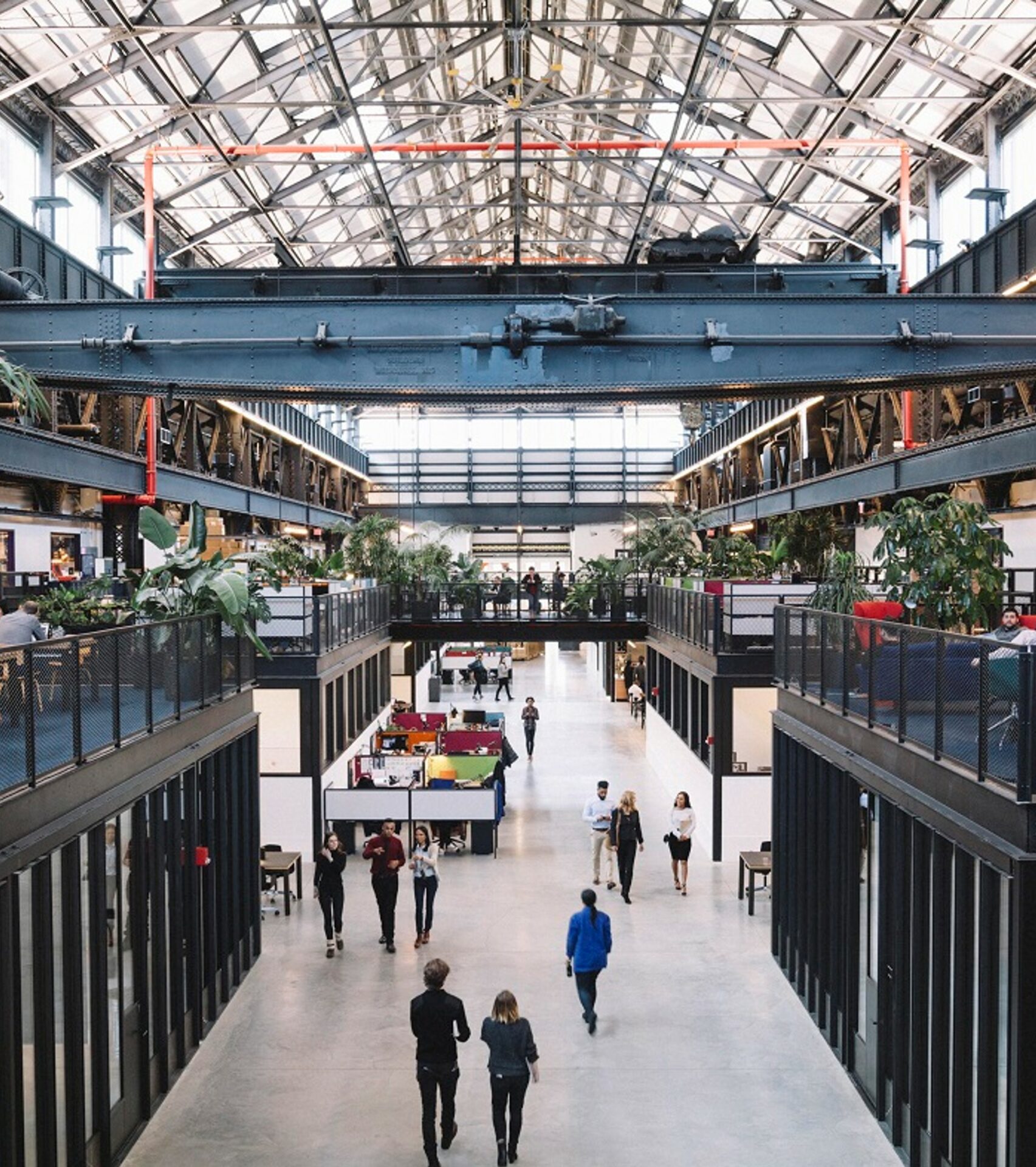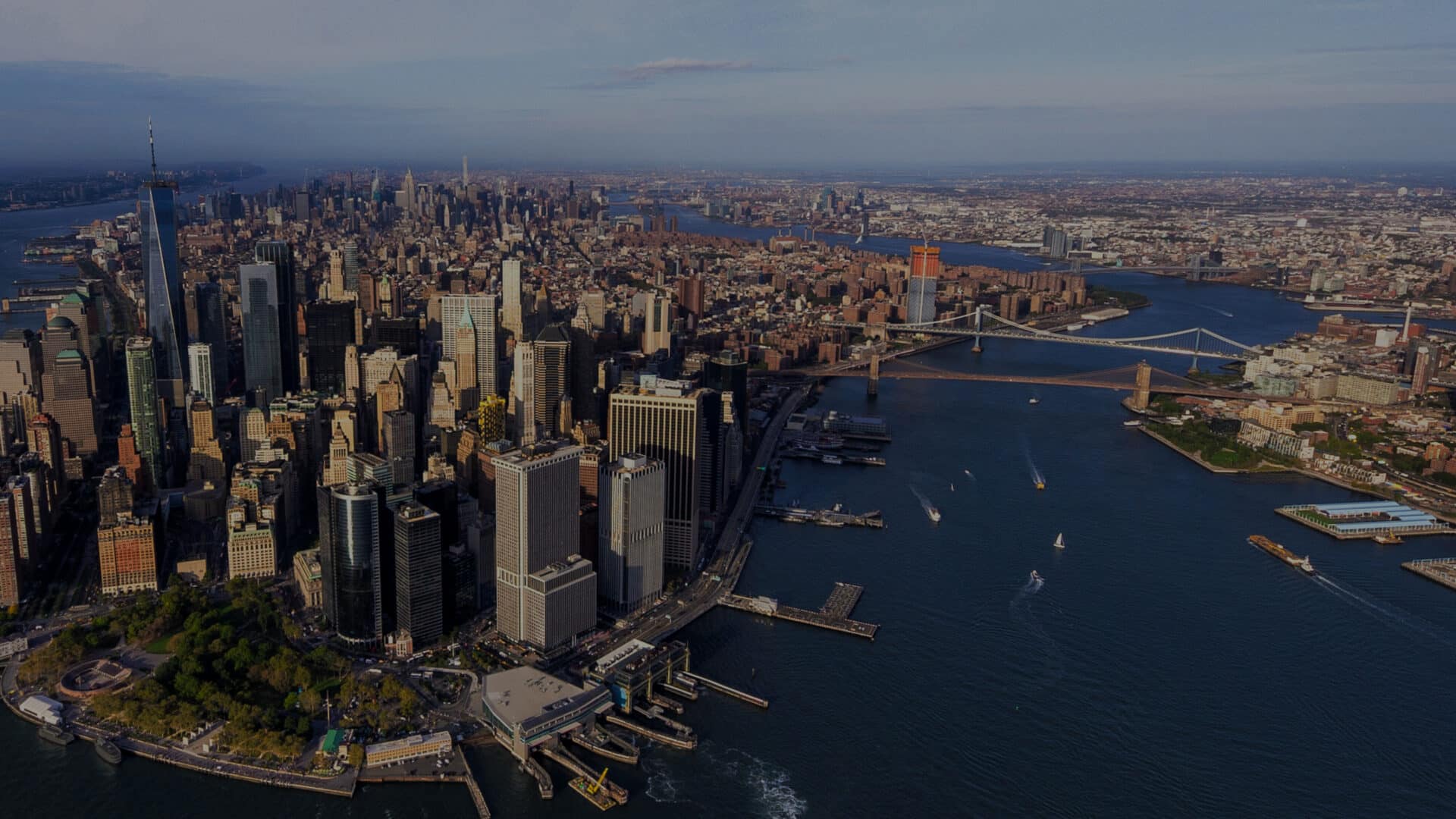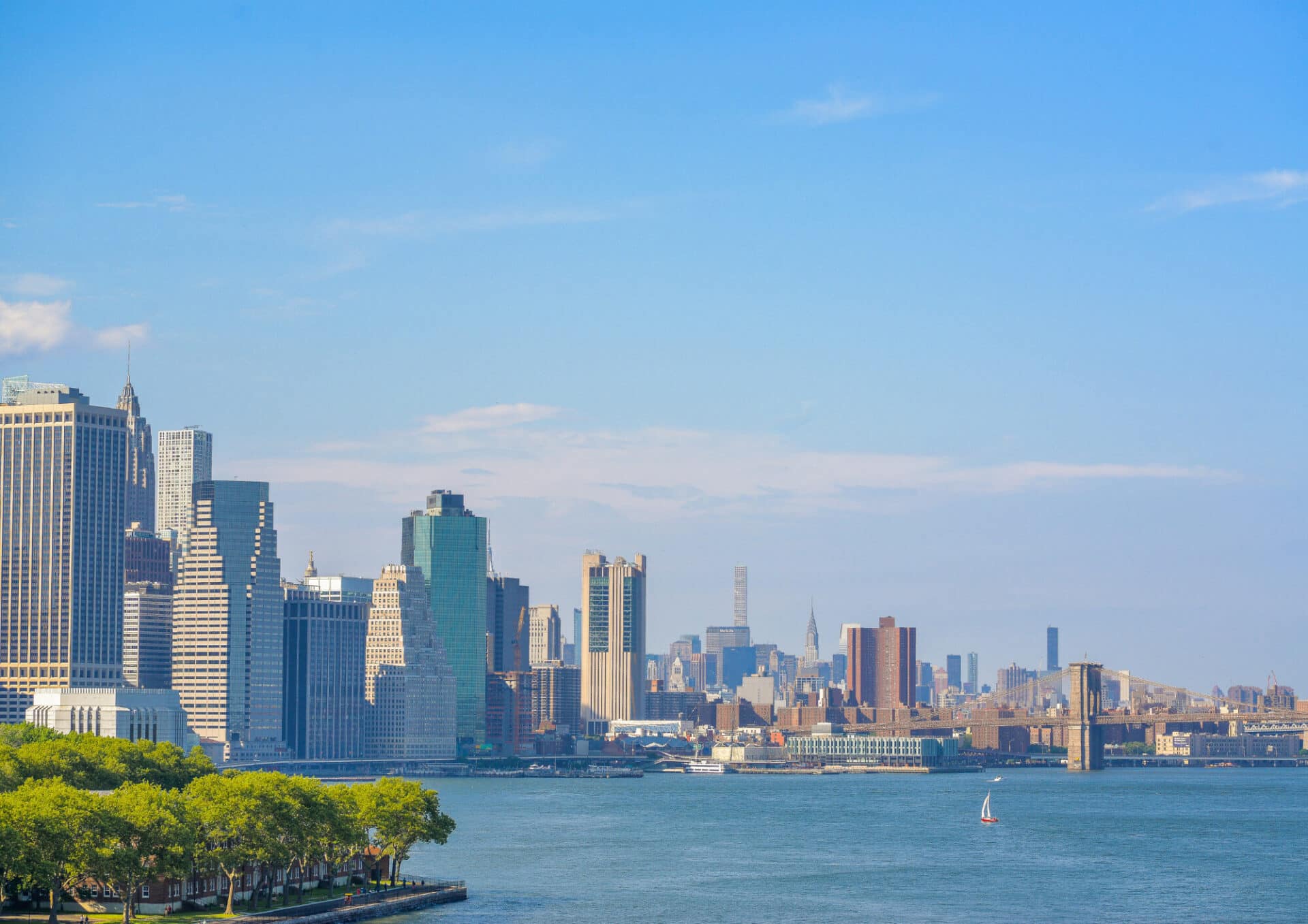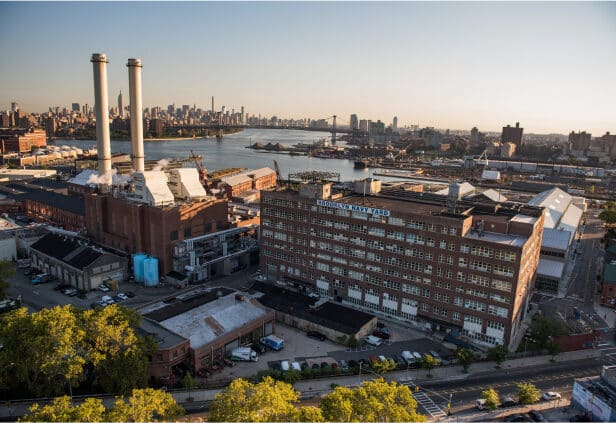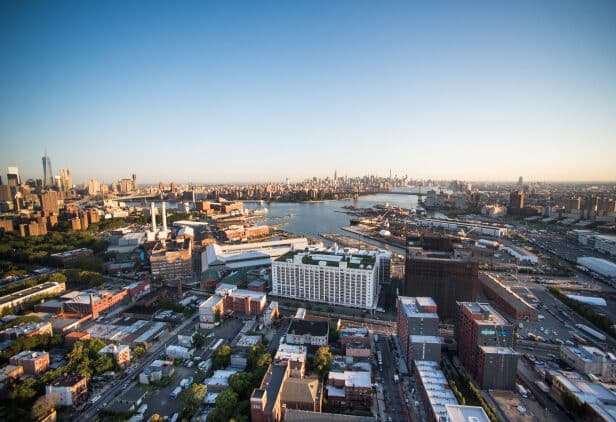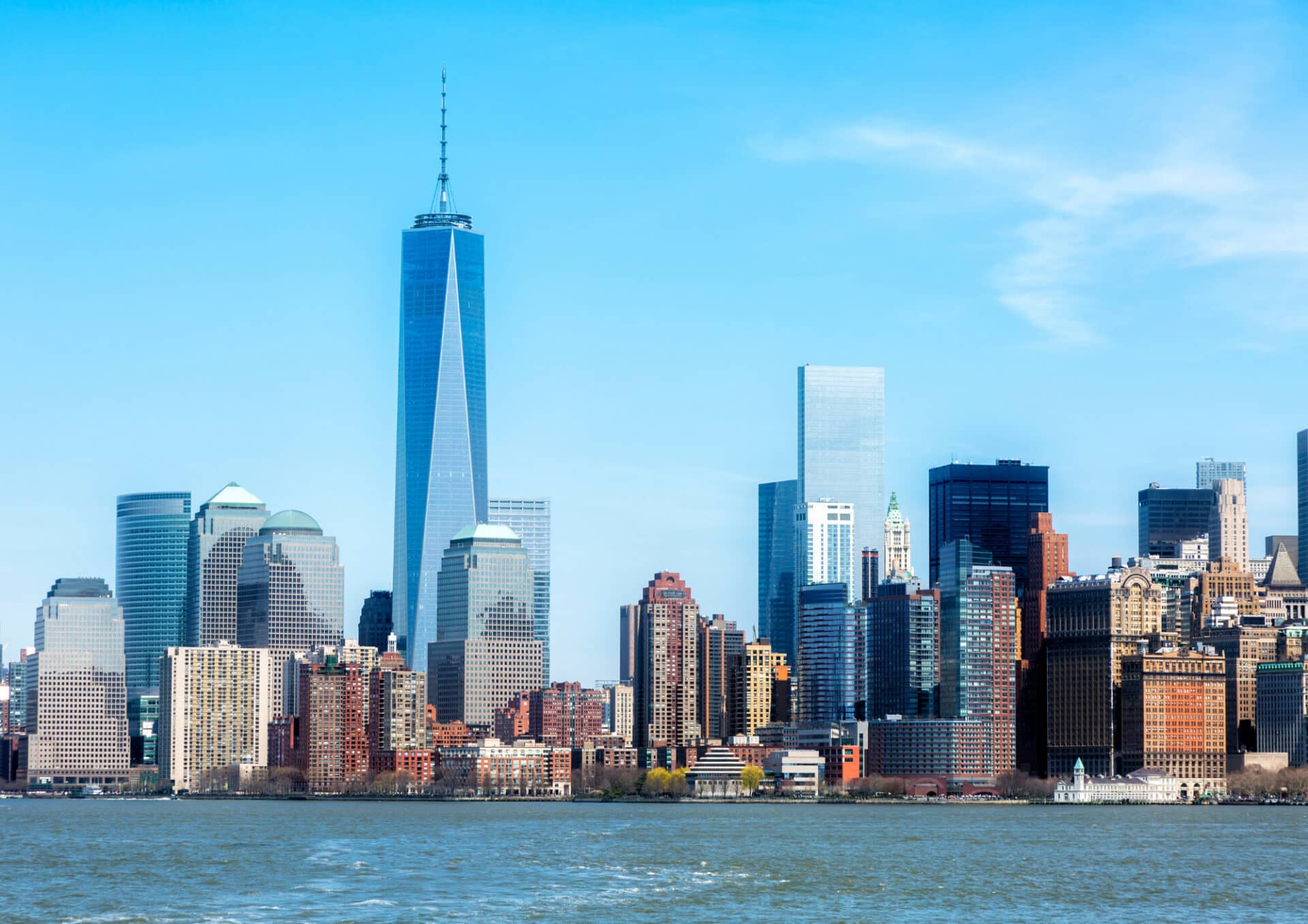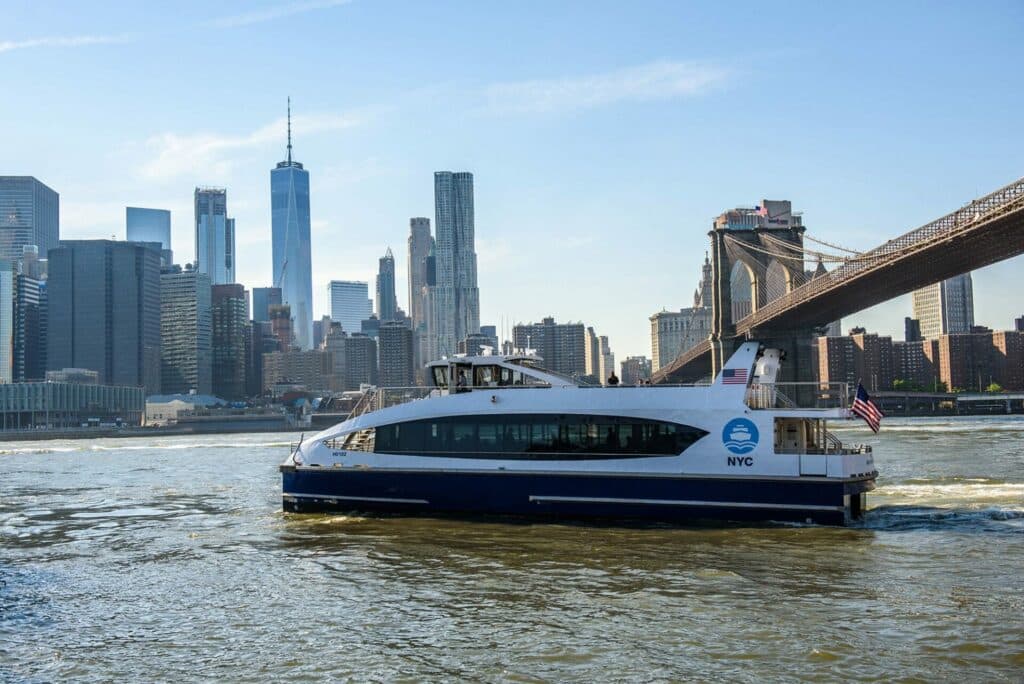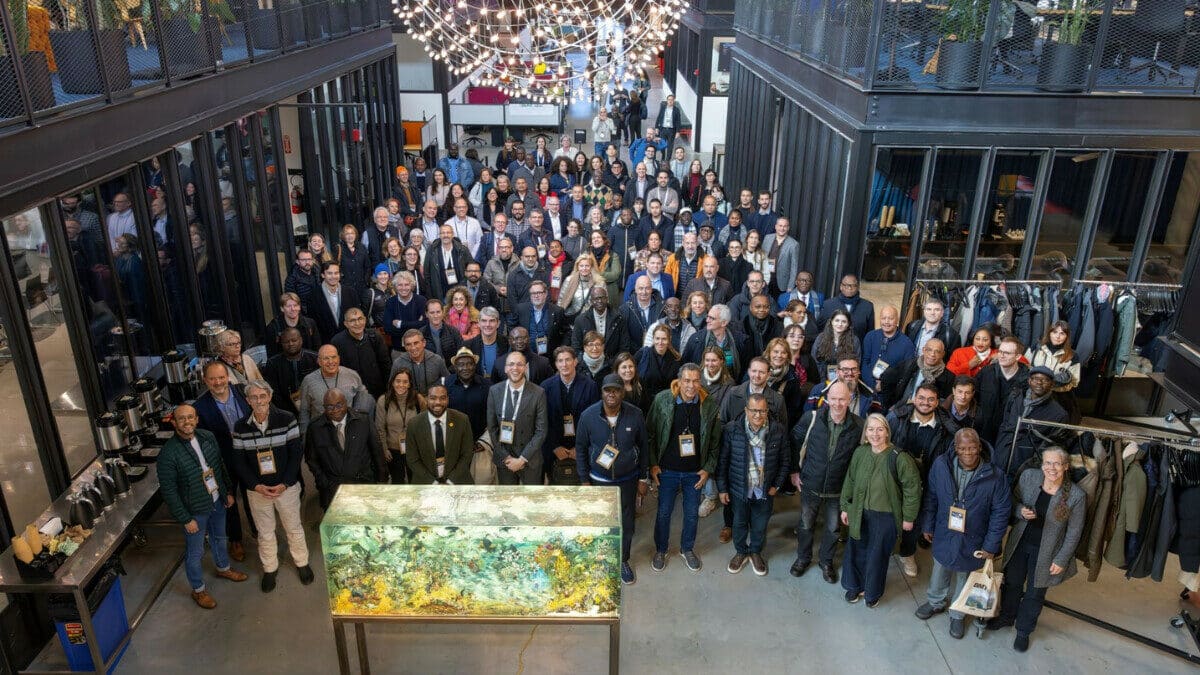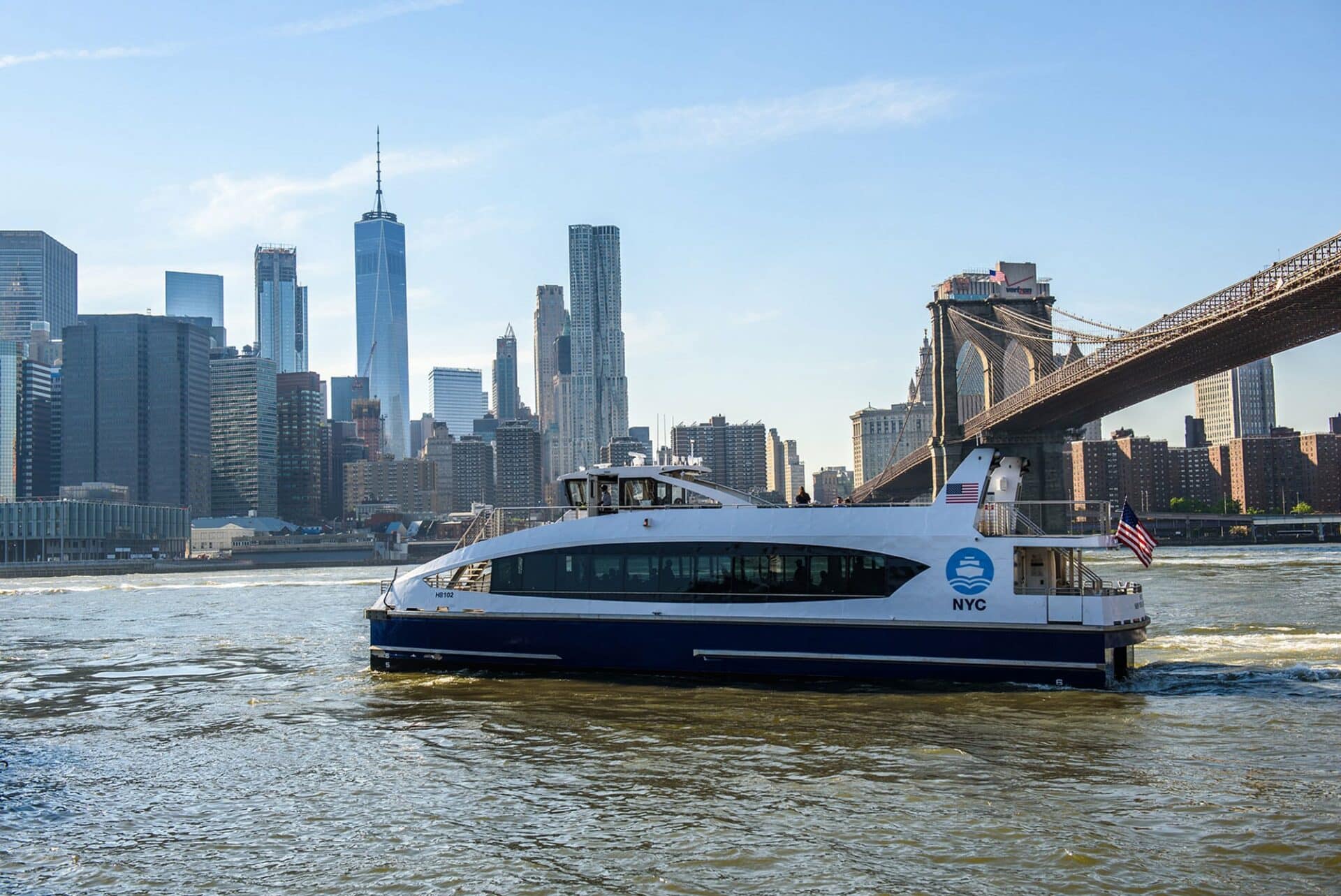For New York’s 8.5 million residents, maritime spaces and waterways are an ever-present reality. These kilometers of waterfront form a vital link between maritime activities and the surrounding communities of the city’s main districts: Staten Island, Manhattan, the Bronx, Queens, and Brooklyn—which alone accounts for 180 km of waterfront. Upper Bay and Newark Bay in the south concentrate the largest port terminals, but more than twenty others are spread across the city, along with more than 20 ferry terminals.
On Thursday, November 20, we will embark on a 5-hour navigation to discover these sites. A rare and exceptional opportunity for a comprehensive overview of the ongoing Port-City transformations in New York.
Maritime innovation
Once on board, we will head toward several areas of maritime innovation, in particular the Brooklyn Navy Yard. As our conference will take place there, it is important to highlight Brooklyn’s dynamism, with 62,000 businesses and 645,000 jobs. Many are located on former industrial sites along the waterfront. New technologies and biotechnologies are among the most represented sectors, making Brooklyn the creative heart of New York’s economy. It is at the core of this vibrant economic hub, in Industry City, that we will also have the privilege of hosting our gala dinner.
Mobility and intermodality
During this afternoon cruise, we will also focus on mobility issues. Like many port cities, road congestion is a major challenge in New York, and strong efforts are being made to develop intermodal logistics and reduce air pollution. New York today speaks of its “blue highway,” which supports urban logistics to serve the entire metropolis. For example, a quarter of the city’s food distribution originates from the Hunts Point Food Distribution Center. At the same time, New York is also investing in micro-freight transport by drone, with a skyport now in operation in Manhattan.
Heading toward offshore wind
Of course, no maritime discovery would be complete without greeting the Statue of Liberty and passing by the container terminals that make New York the leading container port on the East Coast, as well as the emerging offshore wind industry. The State of New York remains a pioneer in this field. The Empire Wind 1 terminal project, which was briefly paused, resumed in May 2025. It combines a logistics zone for turbines, blades, and towers, offshore wind control offices, a base for maintenance teams, and a landing area for the electricity produced, with conversion at a substation before being fed into the land grid. Eventually, 500,000 households will be powered this way.
Welcome aboard for this highlight of our conference. Not to be missed!
Itinerary
Stop 1: BNY
Stop 2: Battery Coastal Resilience
Stop 3: Statue of Liberty / Ellis Island
Stop 4: Port Jersey Container Port
Stop 5: Cape Liberty Cruise Port
Stop 6: Brooklyn Army Terminal
Stop 7: Bush Terminal Piers Park / Pier 6
Stop 8: SBMT / SIMS Metal Recycling
Stop 9: Brooklyn Marine Terminal / BCT
Stop 10: Governor’s Island Climate Exch.
Stop 11: Brooklyn Bridge Park
Stop 12: Downtown Skyport
[Extended section on Electrification efforts around the Harbor]
Stop 13: Cornell Tech (brief mention)
Stop 14: DSNY East 91ST Street
[Extended section on Blue Highway, weaving DSNY & NYC EDC work]
Stop 15: Hunts Point [Markets + Marine]
[Heading south, time for Q&A or a break]
